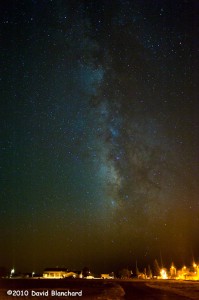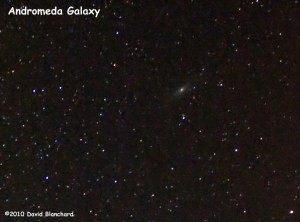The other day the International Space Station (ISS) made a transit of the western sky during twilight. Low on the horizon was the planet Venus with the ISS streaking across the sky above. I’ve been shooting images of the ISS for a year or two but think this is one of the best. It works for a number of reasons. One is the bright twilight on the horizon deepening into dark night sky above. The planet Venus — and its reflection in the water — add a counterpoint.
To create this image I set the camera on continuous shoot and then used the remote release to start. The images are ISO 200, f/4.0, 28mm wide angle lens, and 10s exposures. Five images were taken so this is 50 seconds of transit.
I opened all five images in Photoshop with each image a layer. Because 50 seconds is long enough for stars to leave trails across the sky — even with a wide angle — I wanted to only use one sky layer. In the other four layers I masked the stars and sky and left only the track of the ISS. The result is sharp points for the stars and Venus and a smooth track for the ISS.

To get daily updates on transit times of the ISS — and other space satellites — I use the following two web sites:
Spaceweather.com (http://www.spaceweather.com)
Heavens-Above.com (http://www.heavens-above.com)


